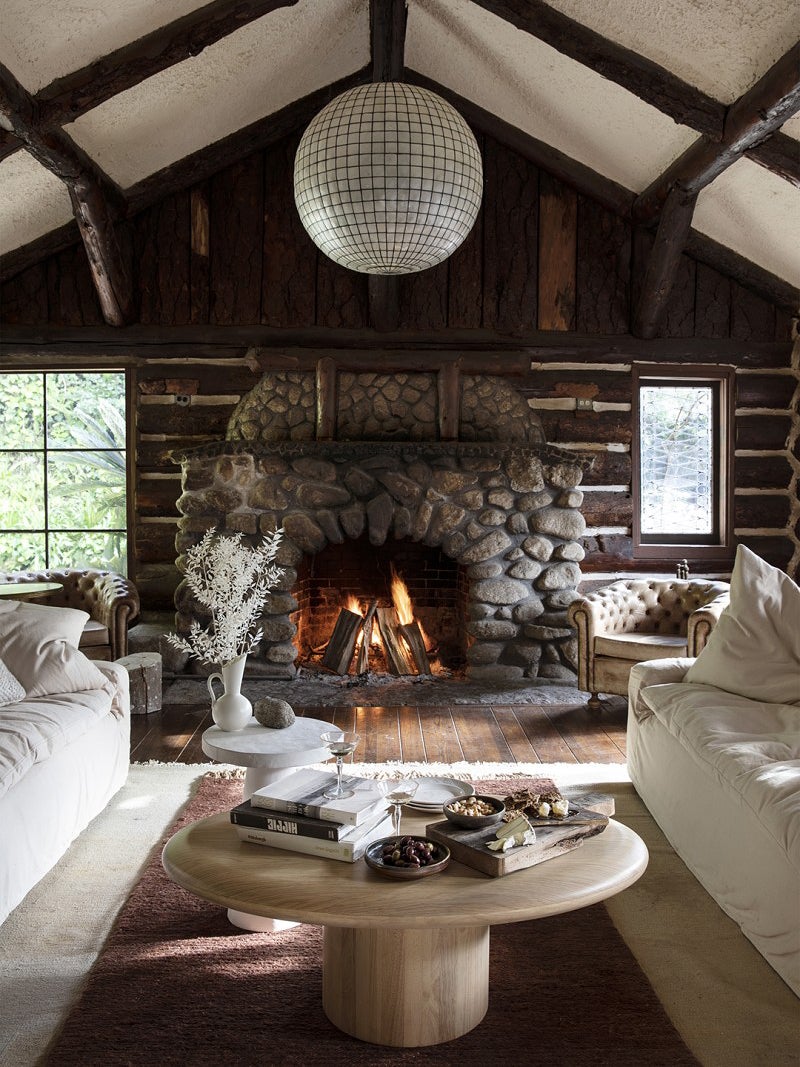The 5 Major Rules of Living Room Rug Placement
A little to the left. A little to the right. Stop!
Updated Oct 12, 2018 12:23 PM
We may earn revenue from the products available on this page and participate in affiliate programs.
You’d think a rug would be the easiest thing to place in a living room, because there’s only one spot where it can go: the floor. But when you get down to it, moving it a few inches to the left or a smidge to the right can be the difference between it looking out of place or just right. Once you’ve landed on a style of rug (is an easy-to-clean flat-weave or textured jute better suited to your lifestyle?), it’s time to consider the placement. This depends on a few key factors: the size of the piece, how big the space is, and the furniture you’ll be surrounding it with. Sure, there are infinite ways you could spin it, but in an effort to avoid constantly rearranging, we like to follow these five no-fail setups.
Put All the Legs On
Instantly tie all your conversational pieces (sofa, accent chairs, coffee table) together by getting a rug that is large enough for all the furniture to fit on it. You’ll want to make sure there are at least 8 inches of room on each side of the sofa and around 36 inches of walking space between the largest pieces of furniture. This extra breathing room ensures nothing looks crammed.
Leave the Back Two Legs Off
For a more casual arrangement that is equally put-together, place only the two front legs of the sofa and armchairs on the rug. Letting the back legs hang off the edge creates the illusion that the room is spacious even if it’s not. Generally, this looks intentional when at least one-third of the piece of furniture is on the rug.
Layer With Balance in Mind
This trick equals pure coziness, and it also helps visually define a spot in the room (ideally, where people are meant to converse and gather). It’s simple: Center a small rug on top of a larger one. Jutes and sisals work great as a base because they’re neutral and allow you to get more playful with something colorful above.
Layer for Intrigue
No right angles? No problem. This method lets you use rectangular rugs in oddly shaped rooms. Follow the same layering method mentioned above (put a rug on top of a larger one), but shift the top one so that it’s perpendicular to another wall in the room. If you’ve committed to a “two legs off” approach around the outer rug, apply the same thinking with any furniture that touches the smaller one (note how designer Dan Mazzarini placed his chrome and leather seats just at the edge of his flat-weave).
Isolate the Coffee Table
While technically the simplest setup, this one is the hardest to nail down. In this scenario, you only have a rug under your coffee table, not the seating. The key is to get the right size so that there are only a few inches between the border of the rug and your sofa (you don’t want it to look like it’s floating out in space). This way, your bare floors can still have their moment in the spotlight.
More stories like this: Legs On or Off? Your Rug Placement Questions Answered This Is the Only Rug for Your Dining Room 10 Living Room Rug Ideas That Tie a Space Together in a Snap






